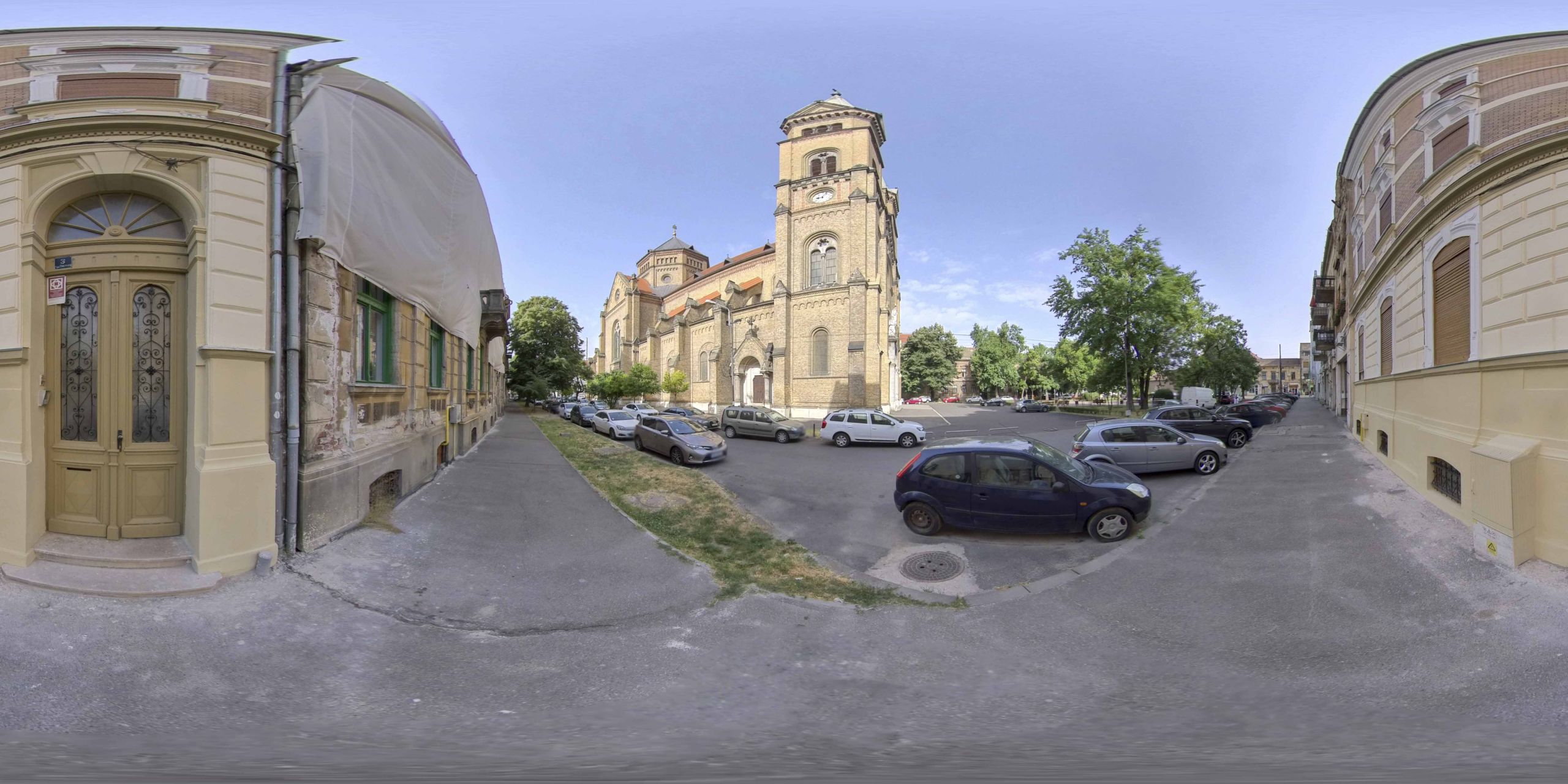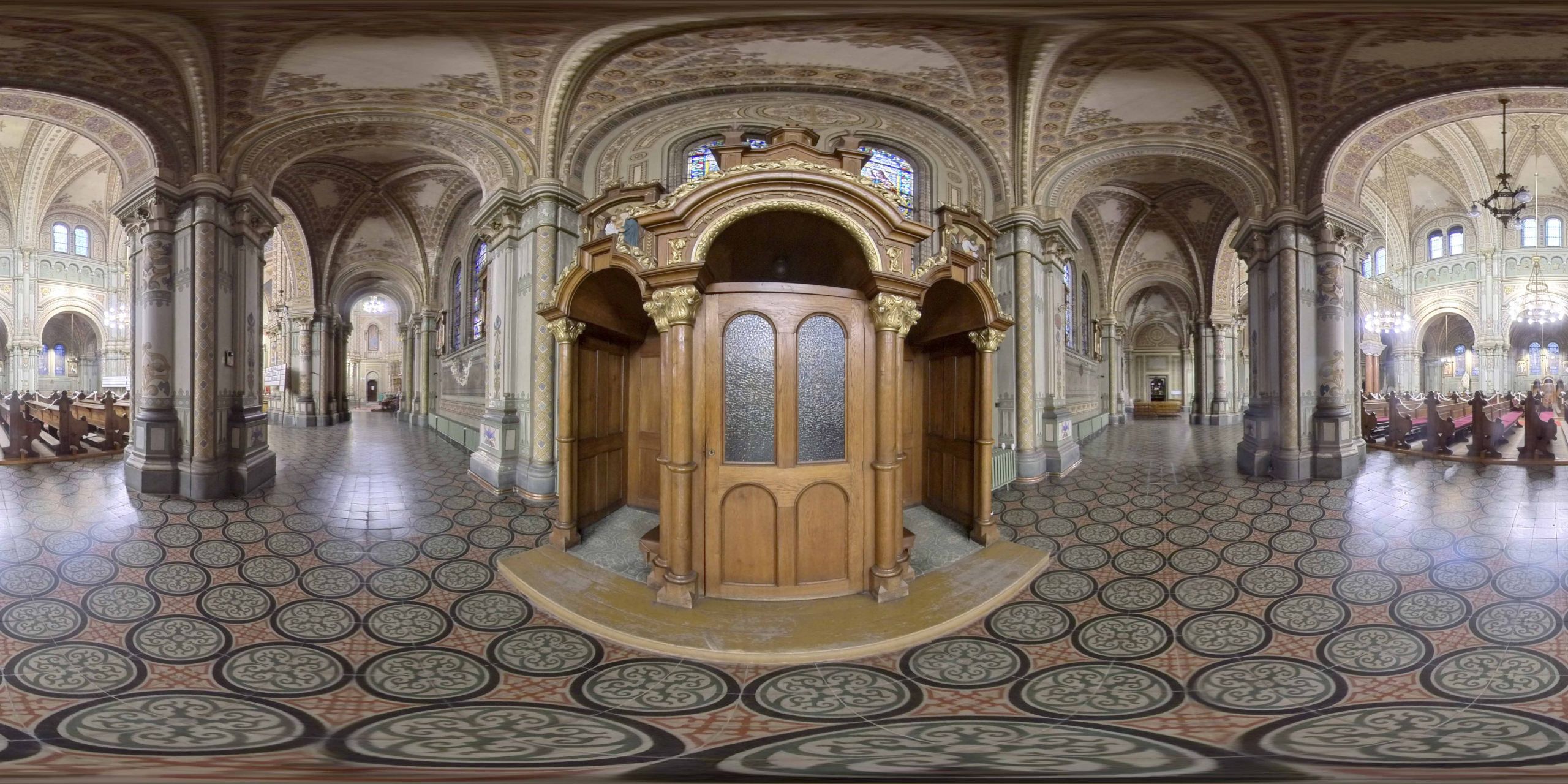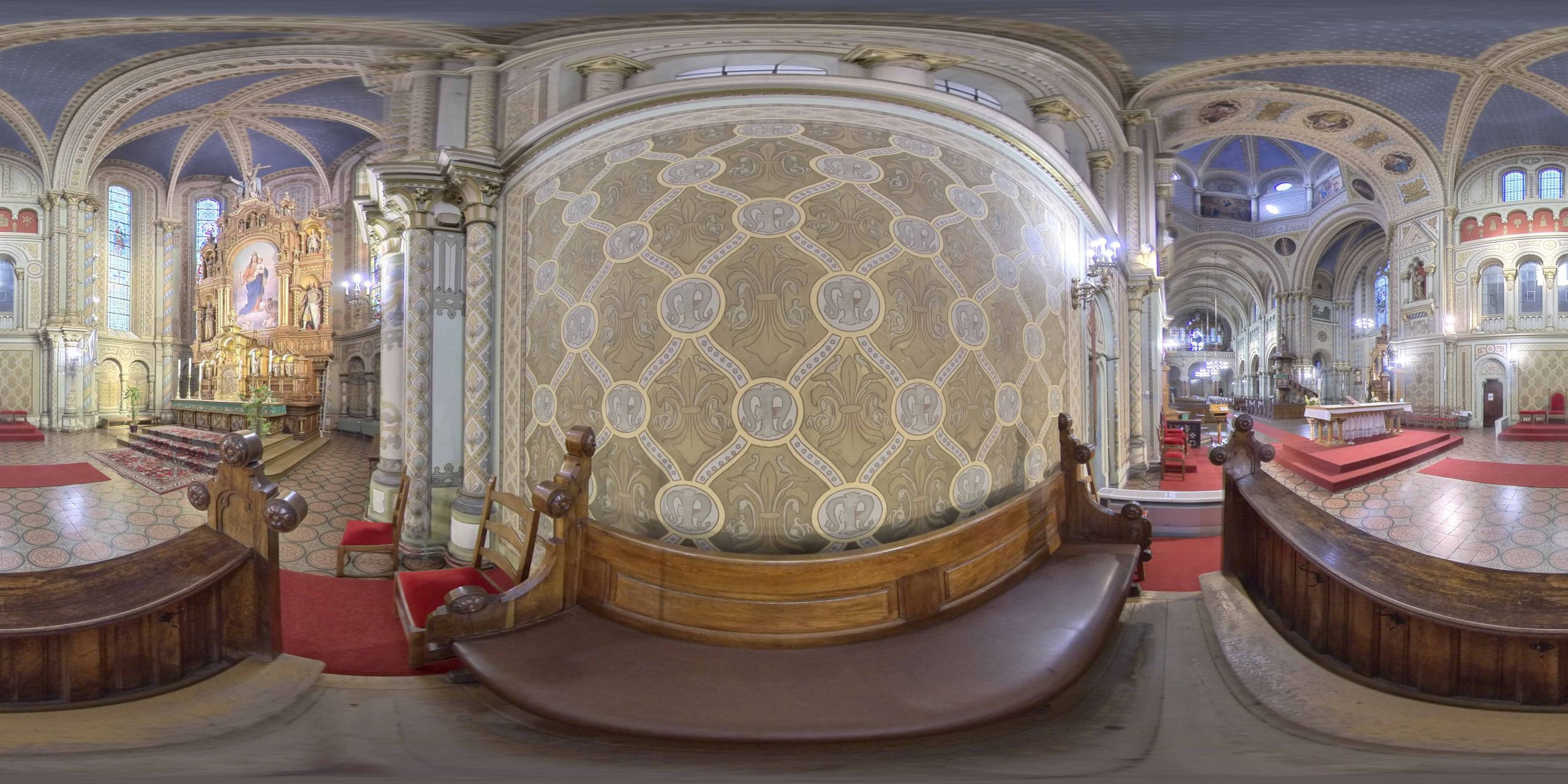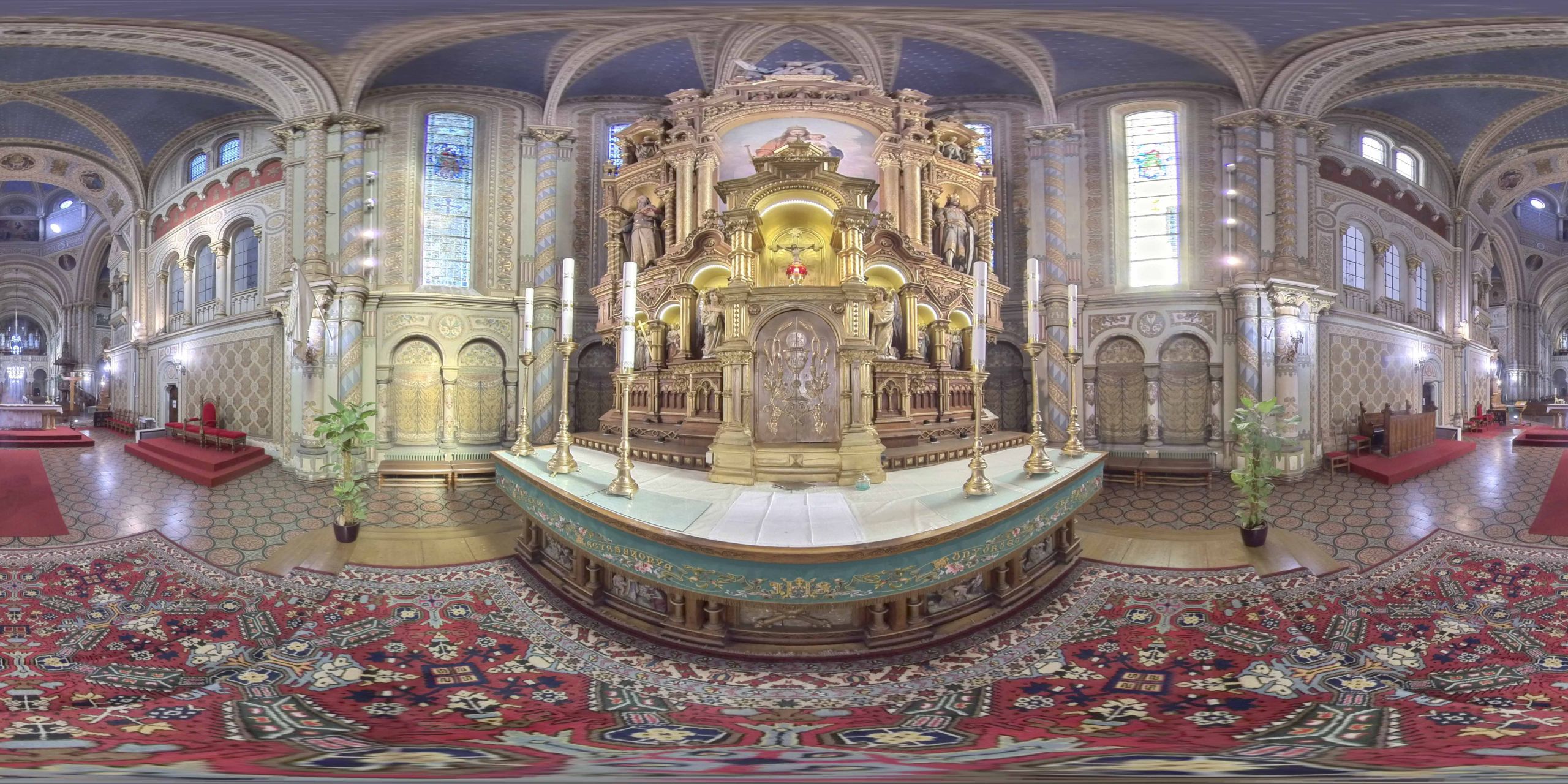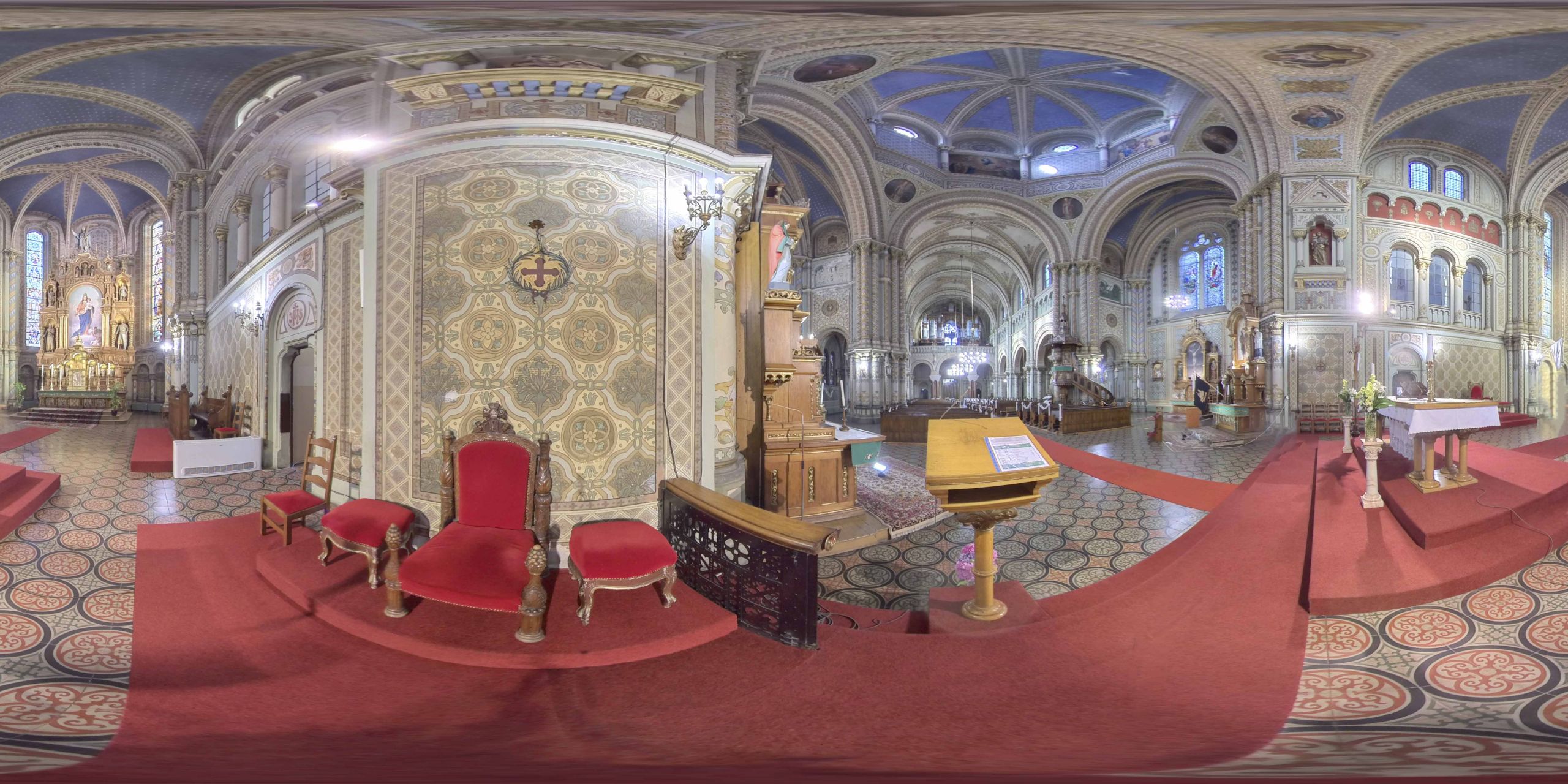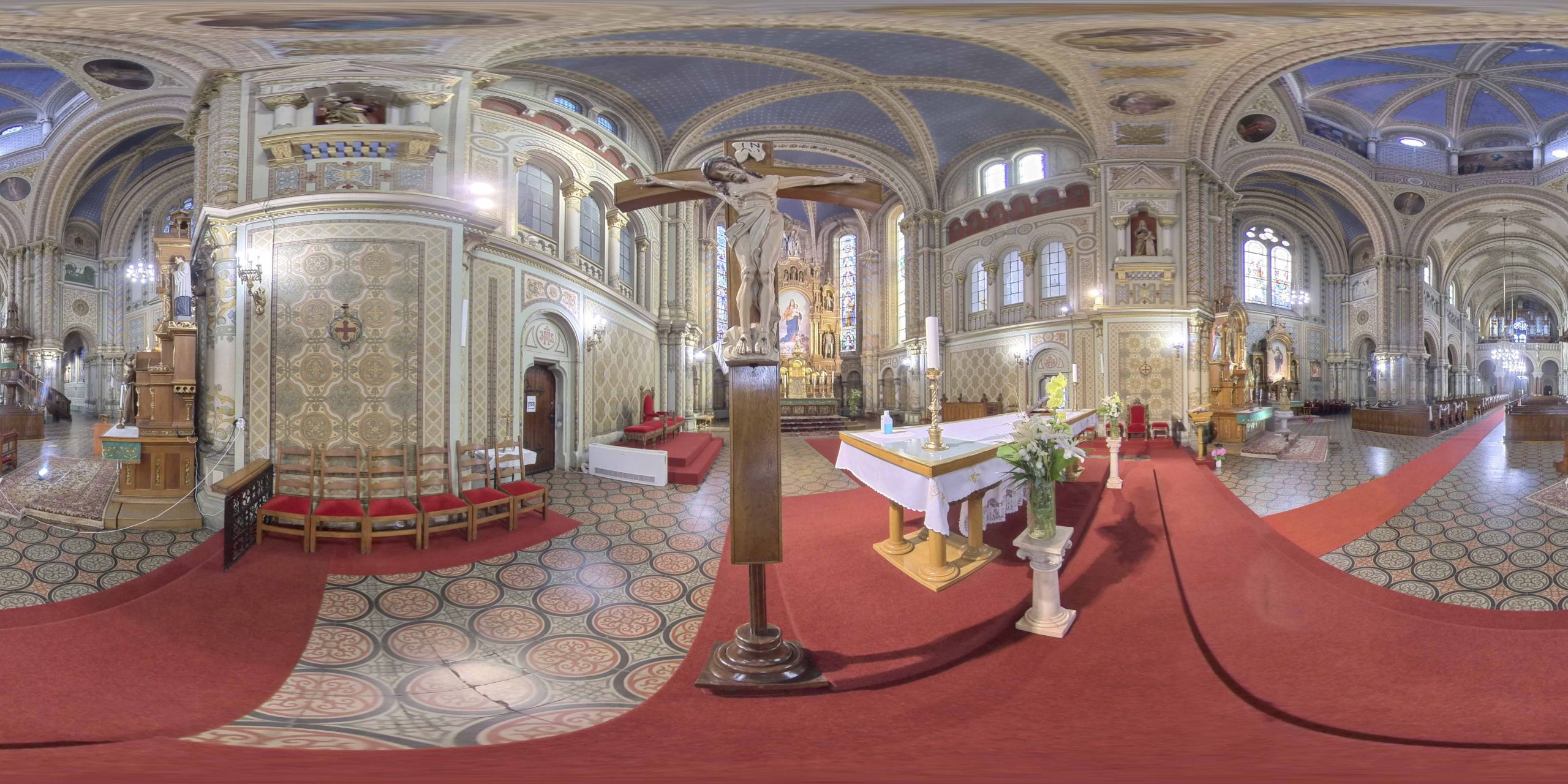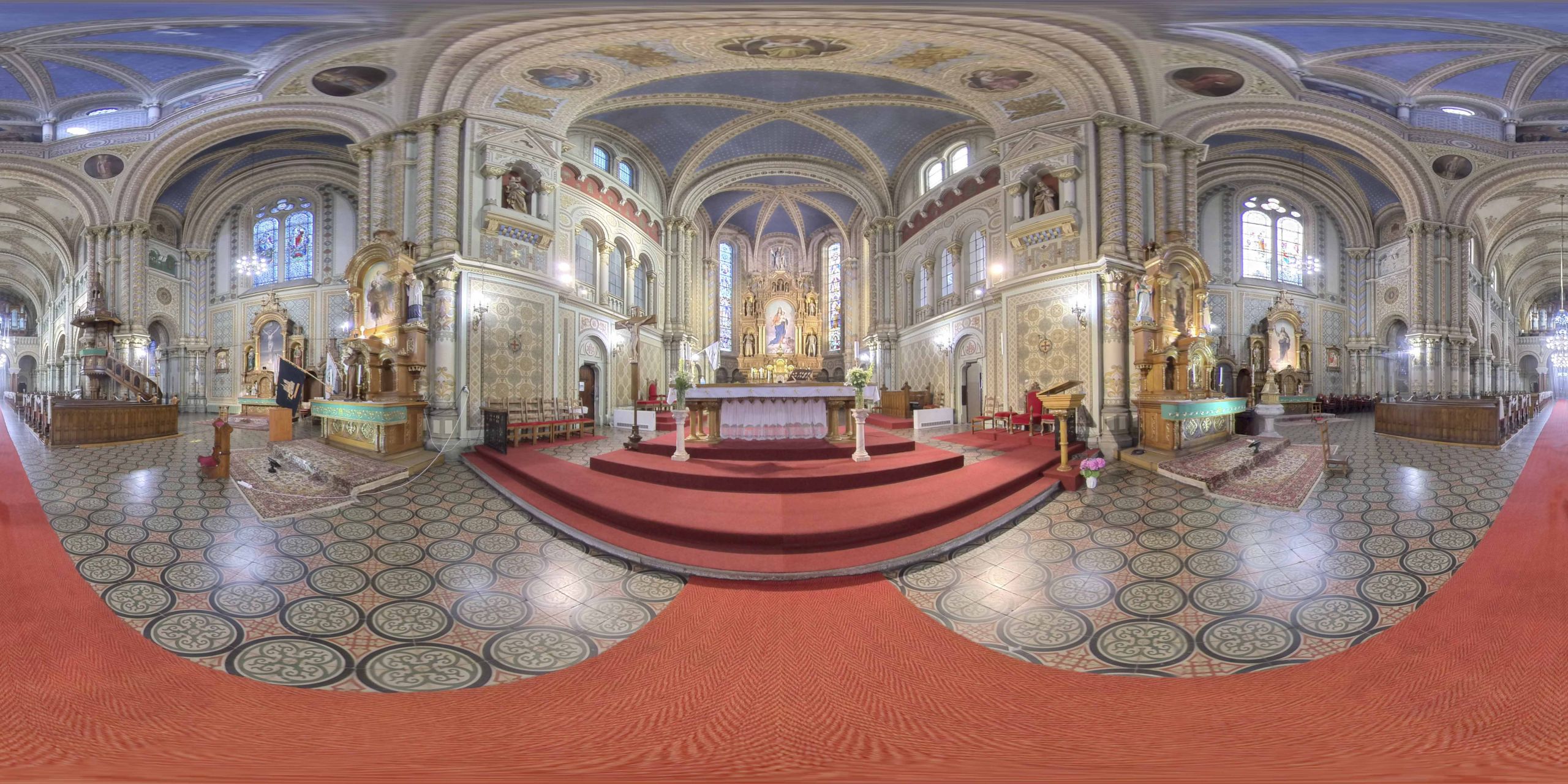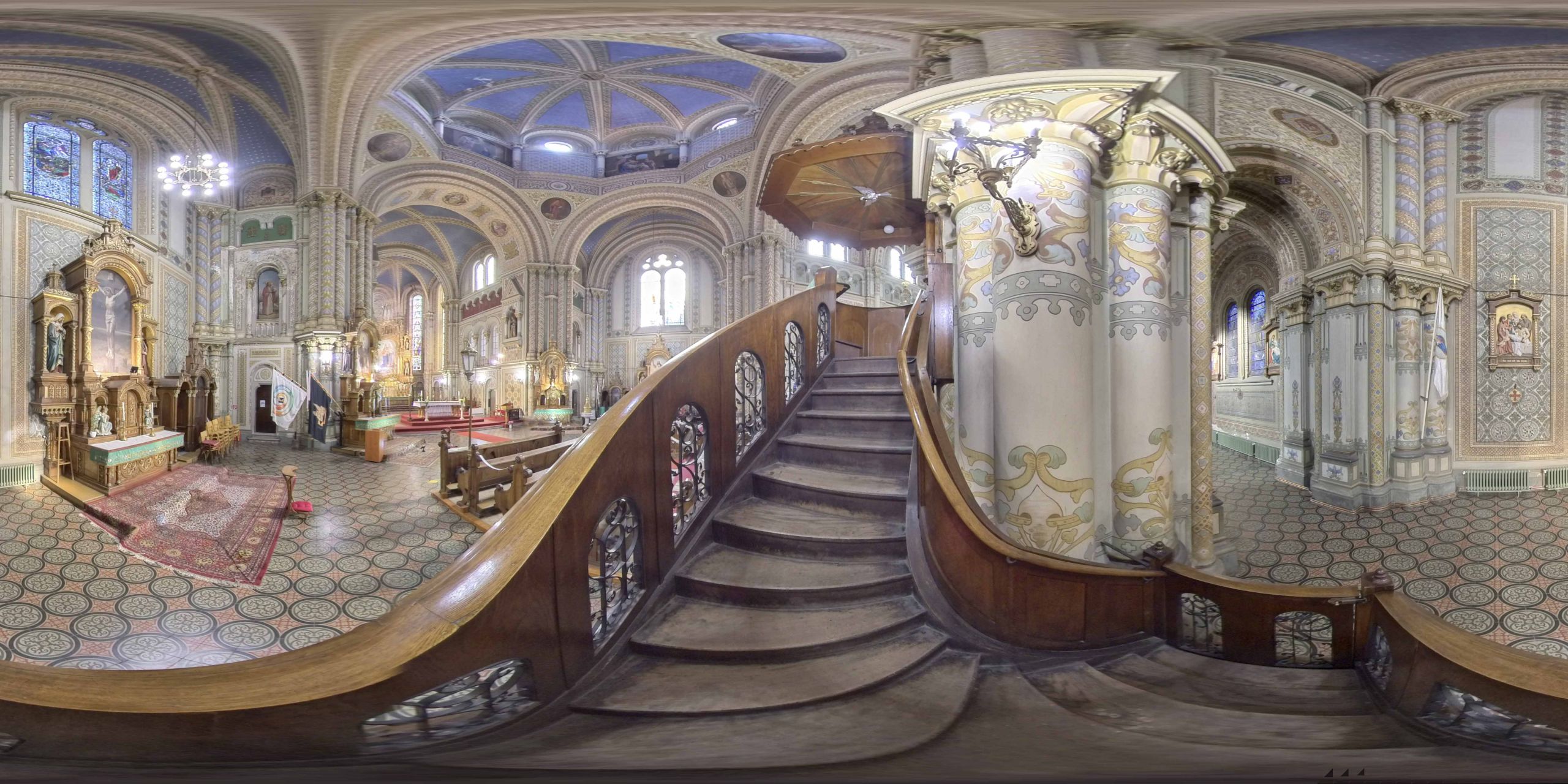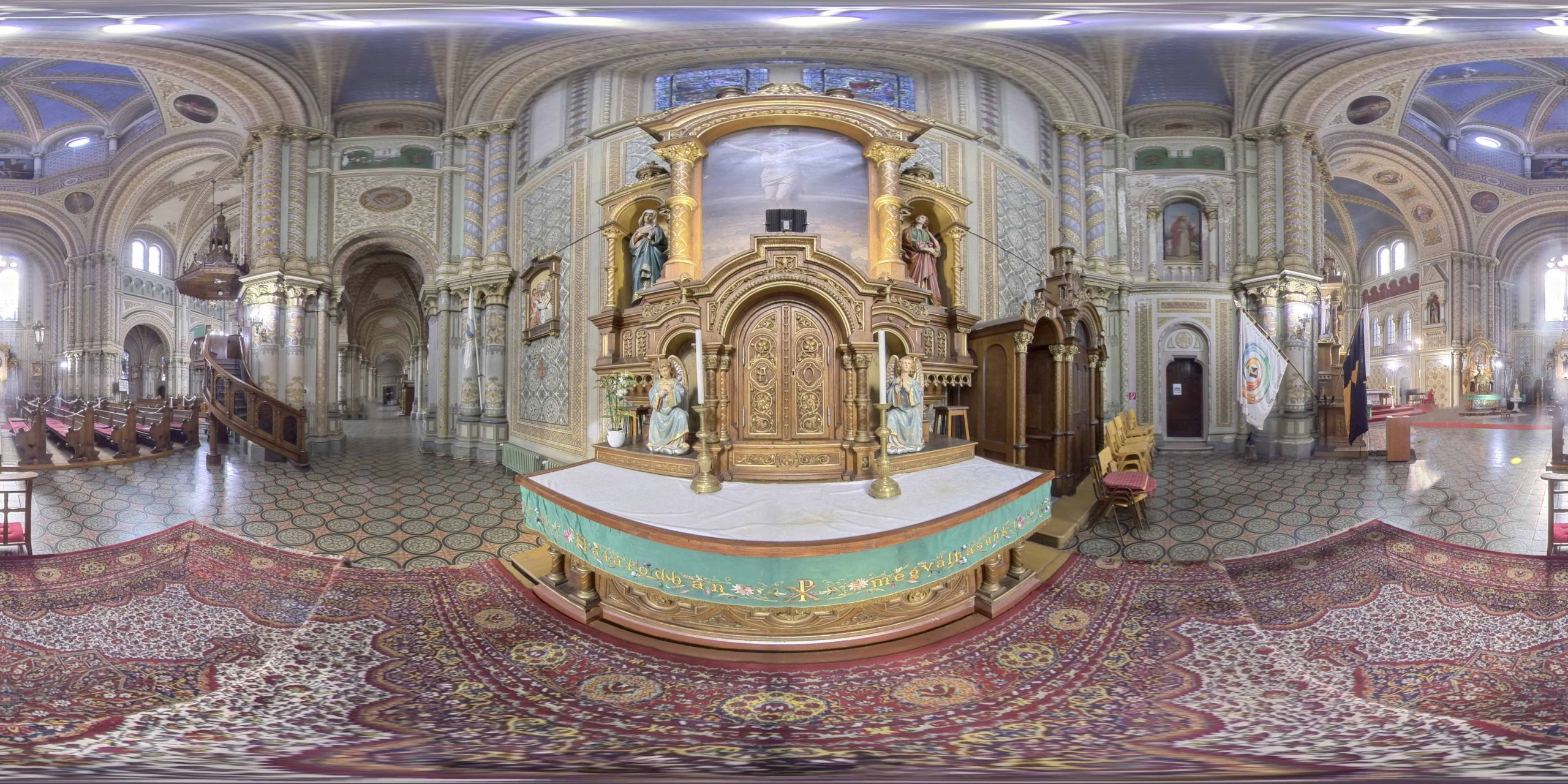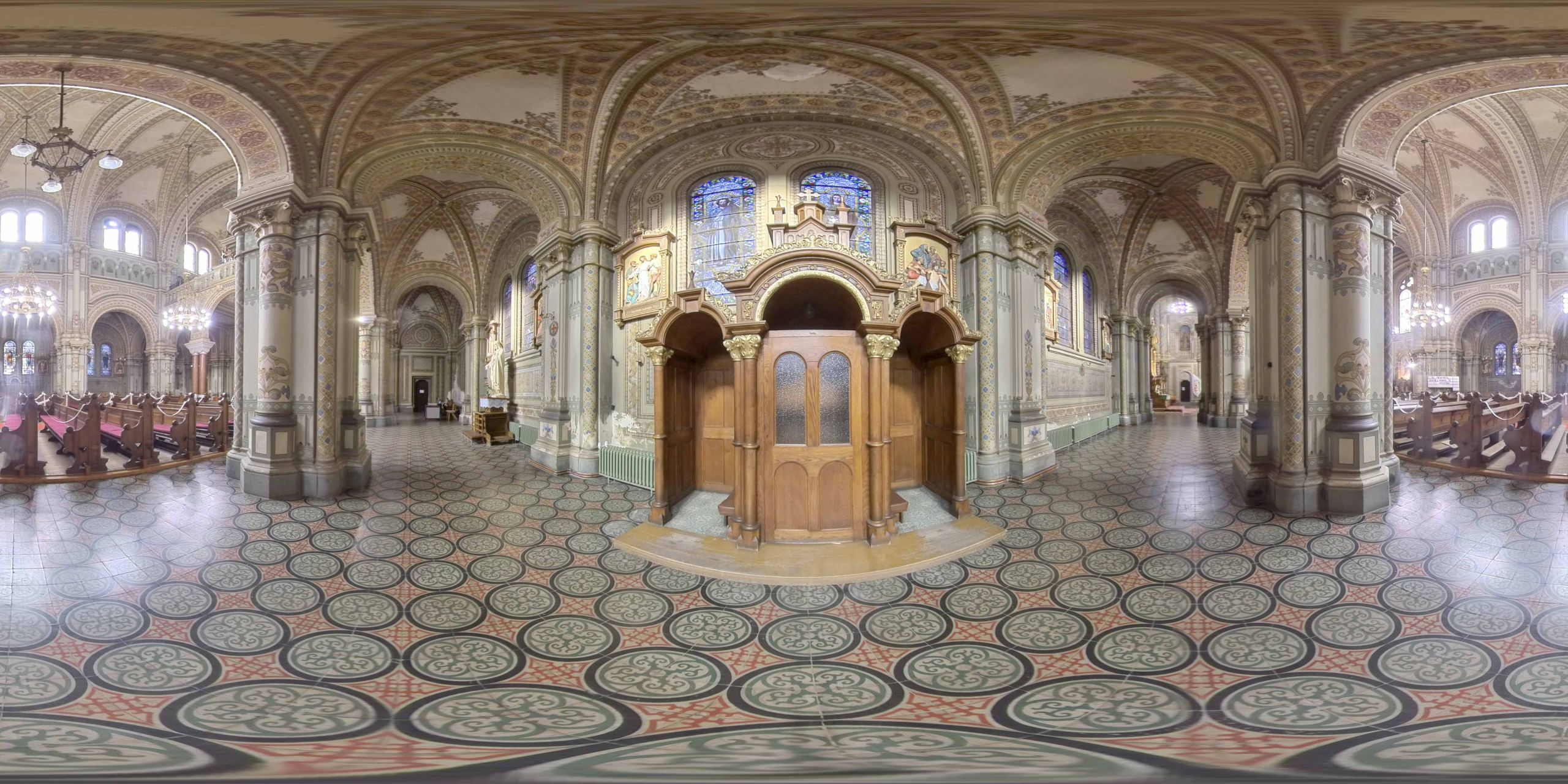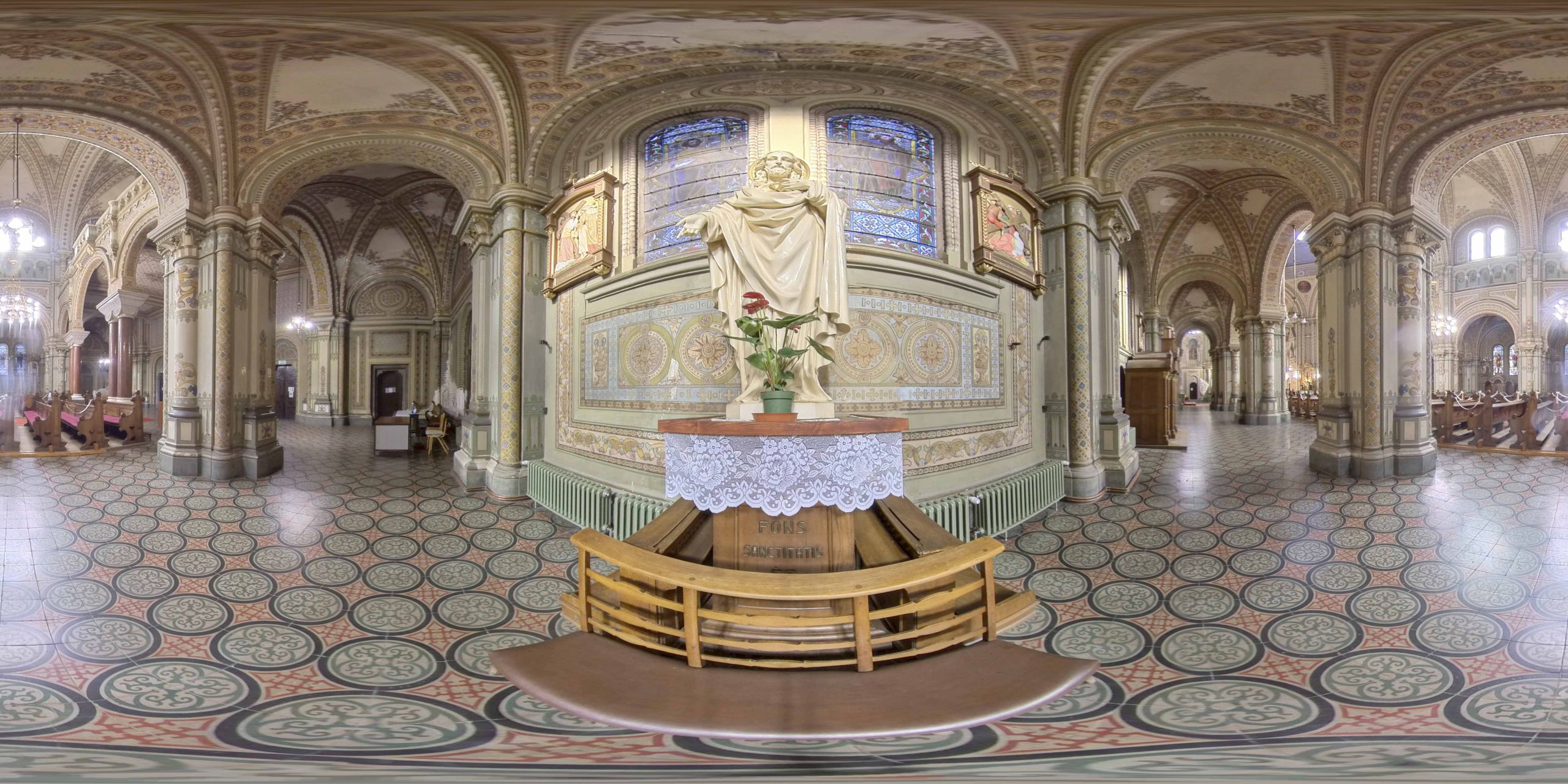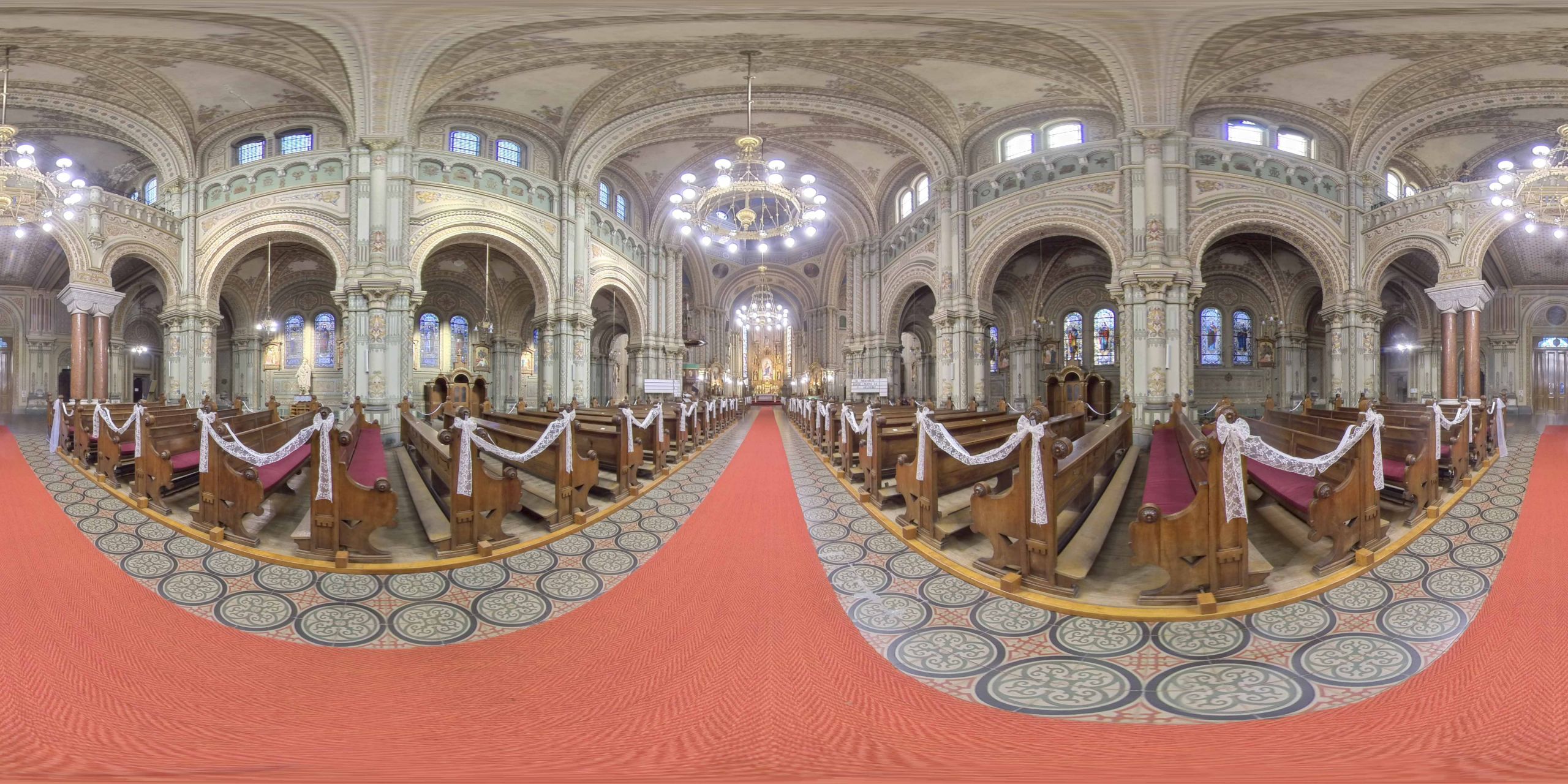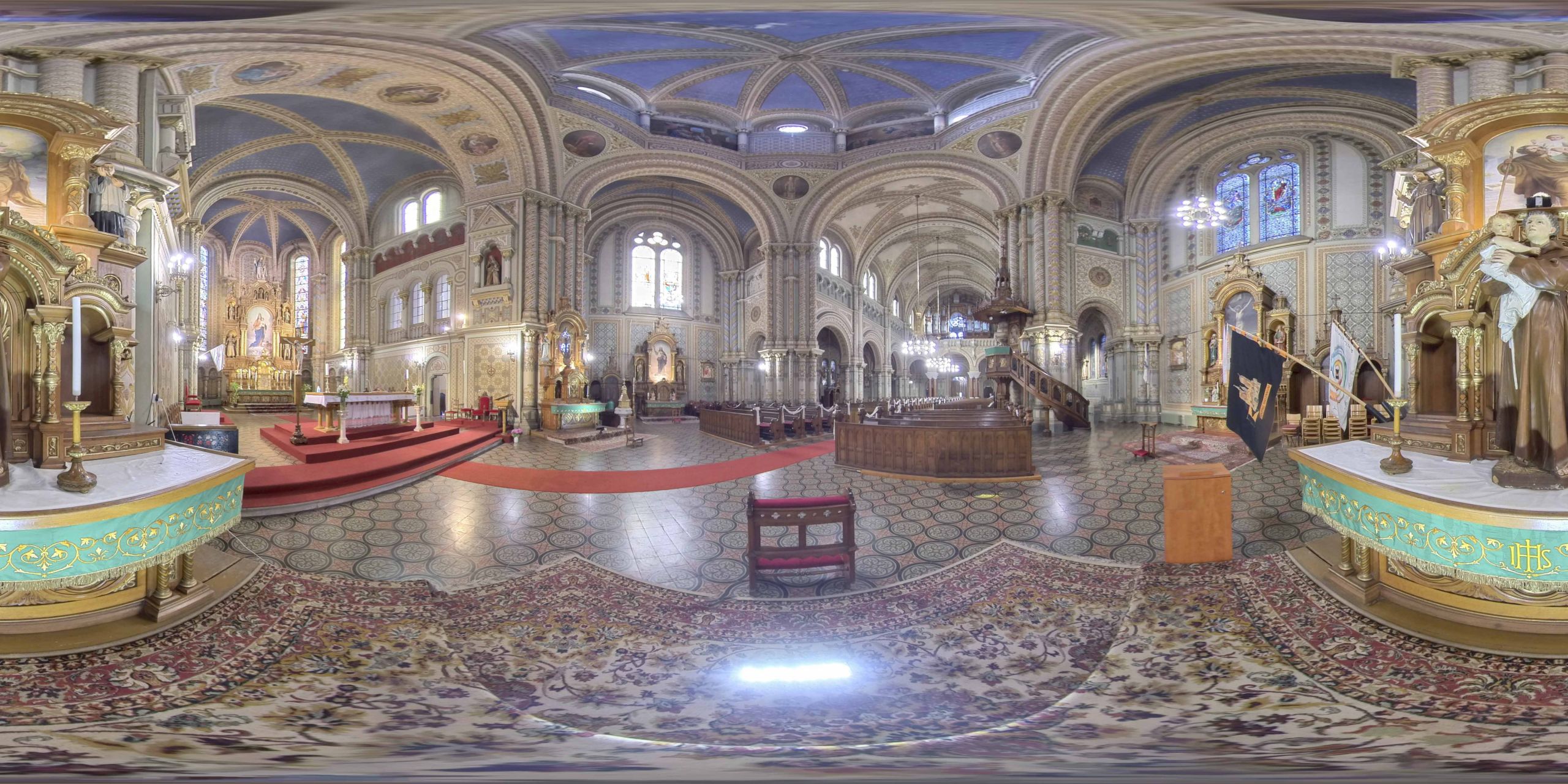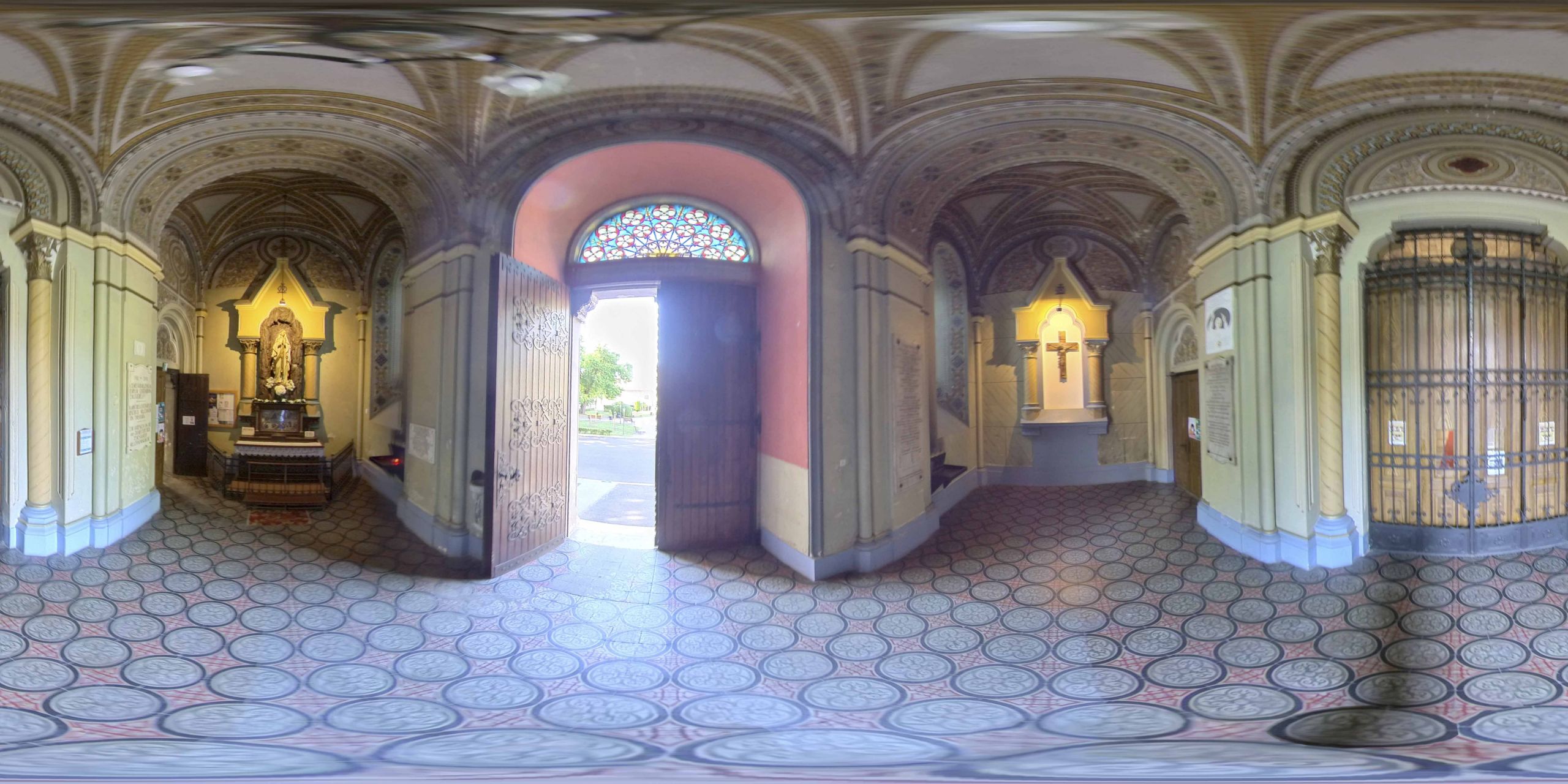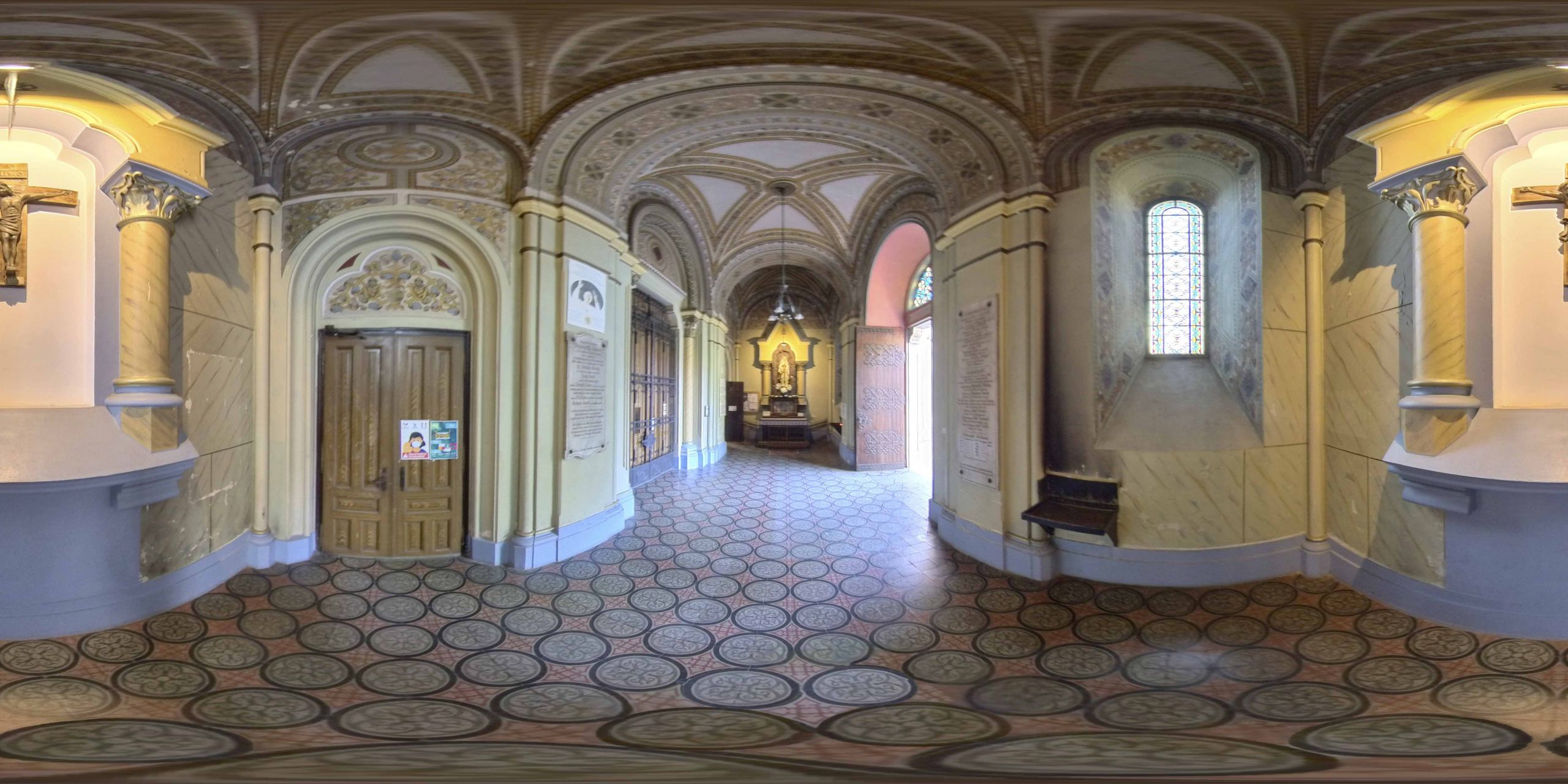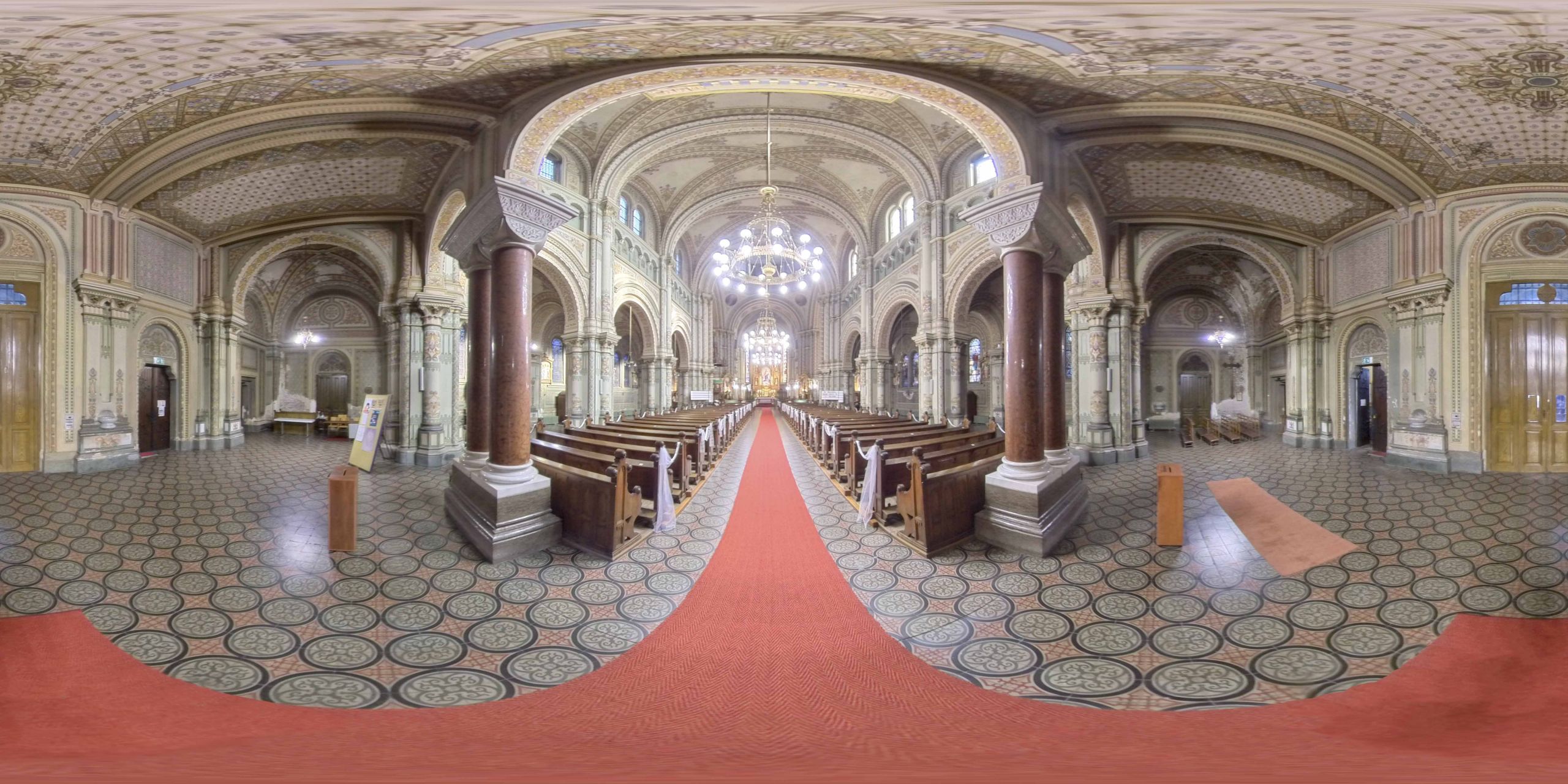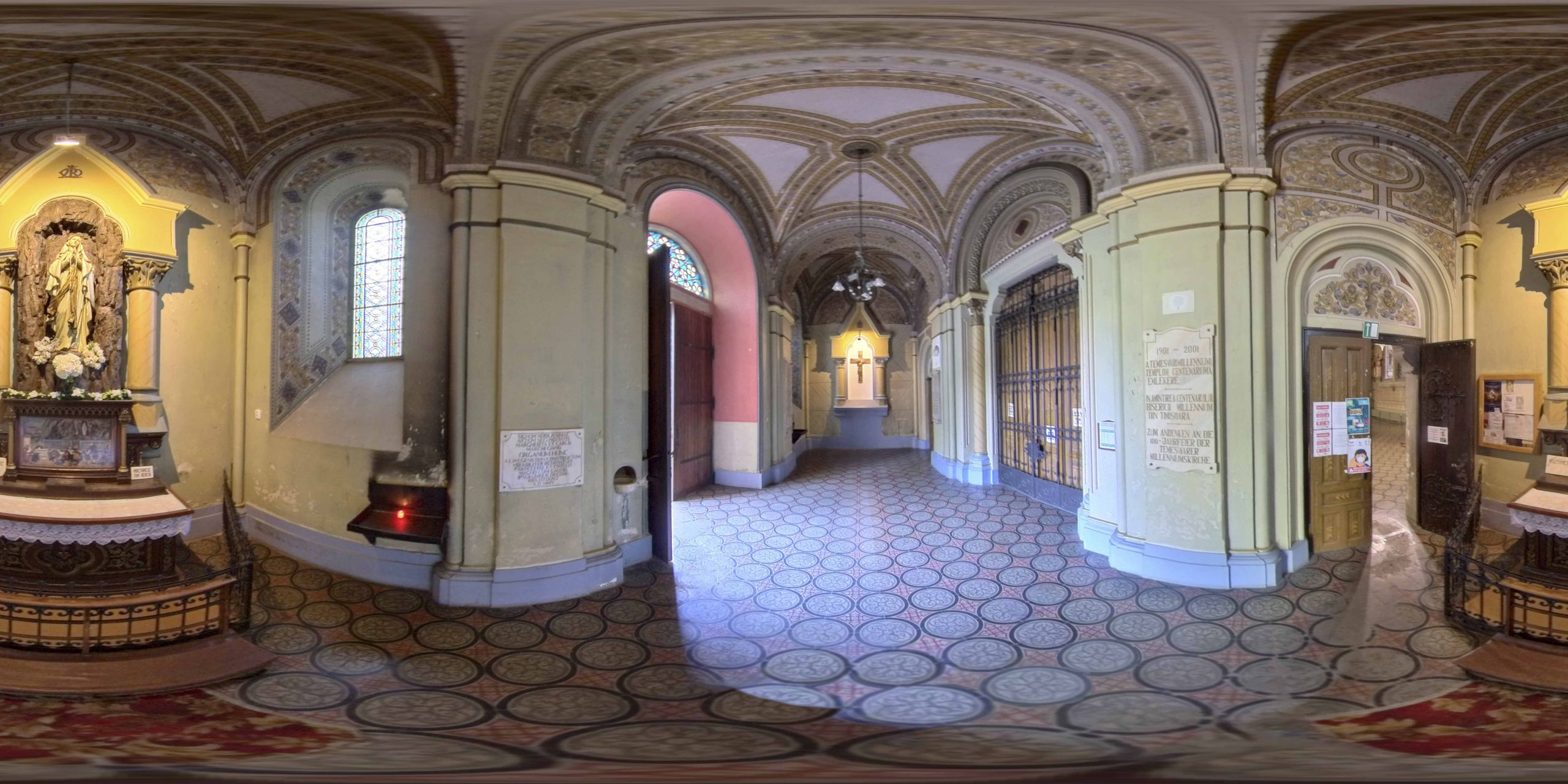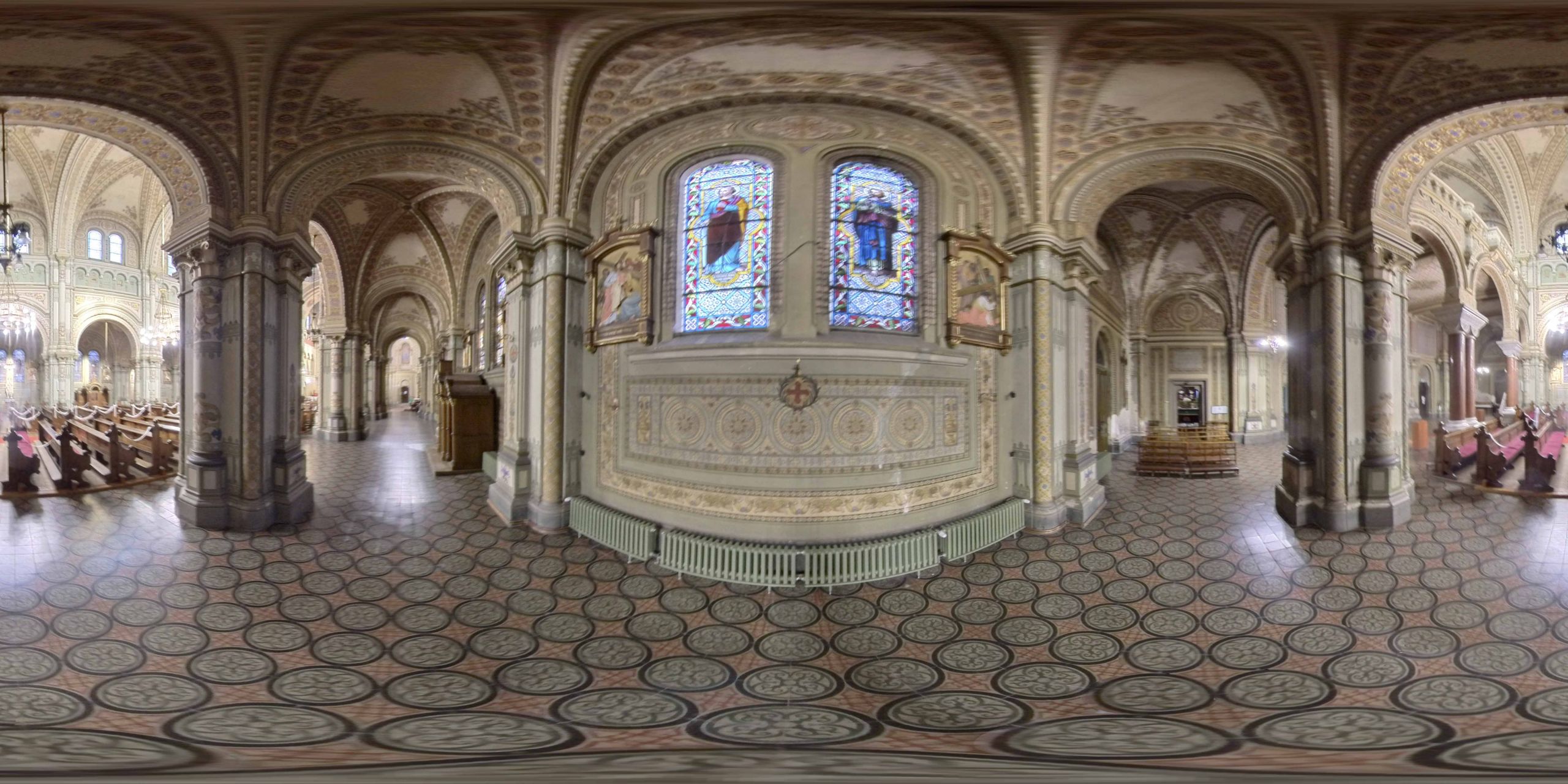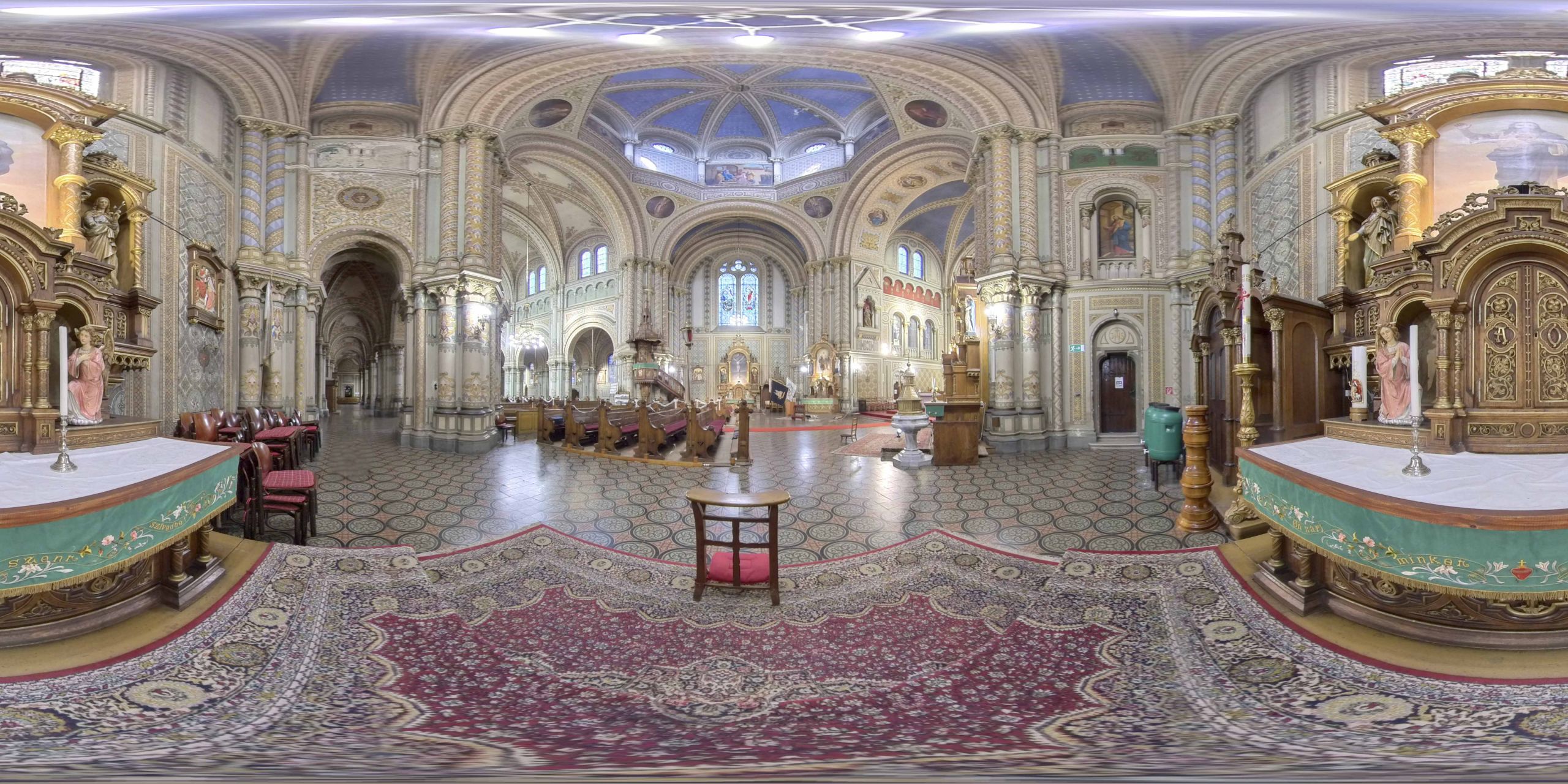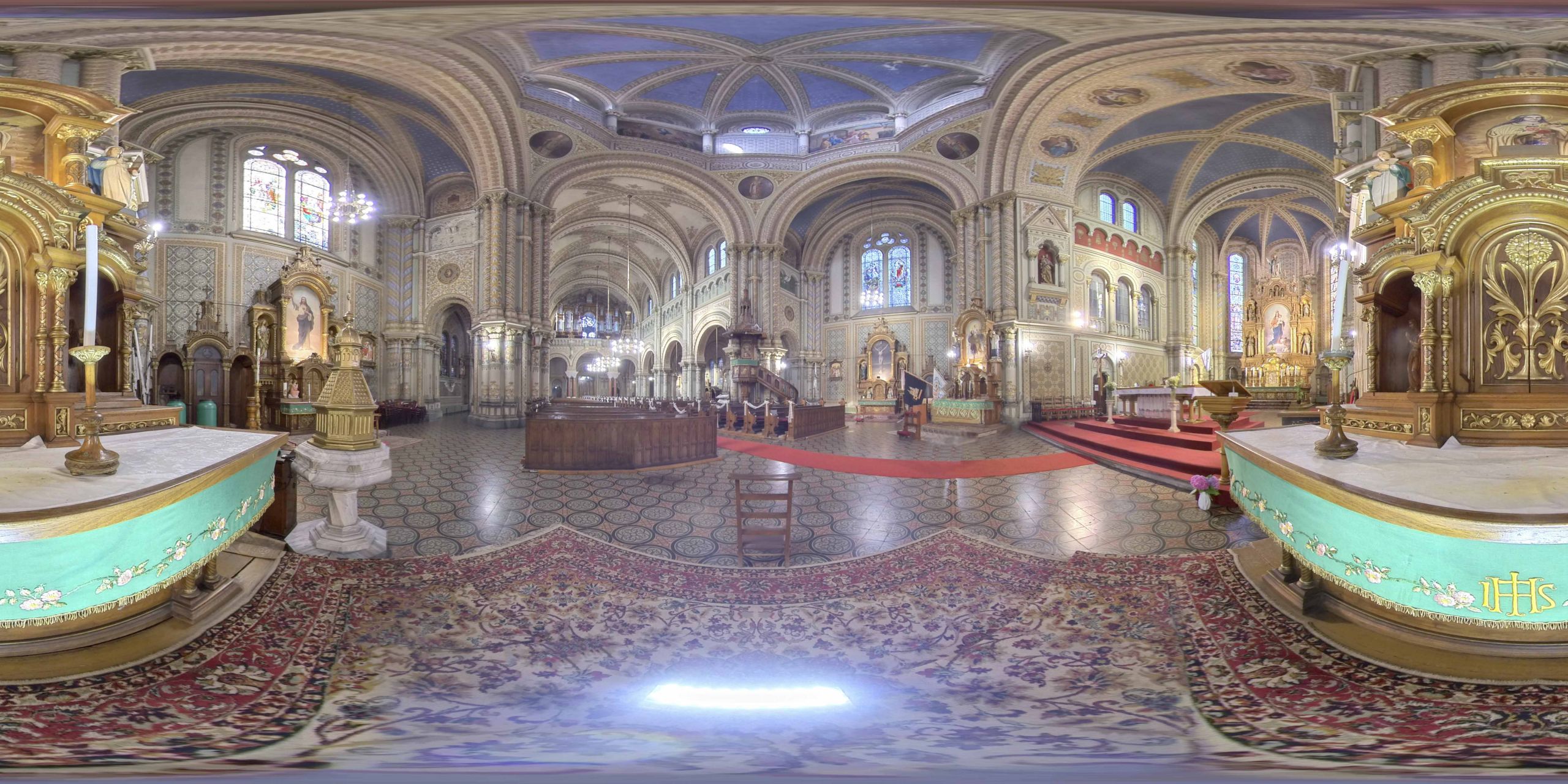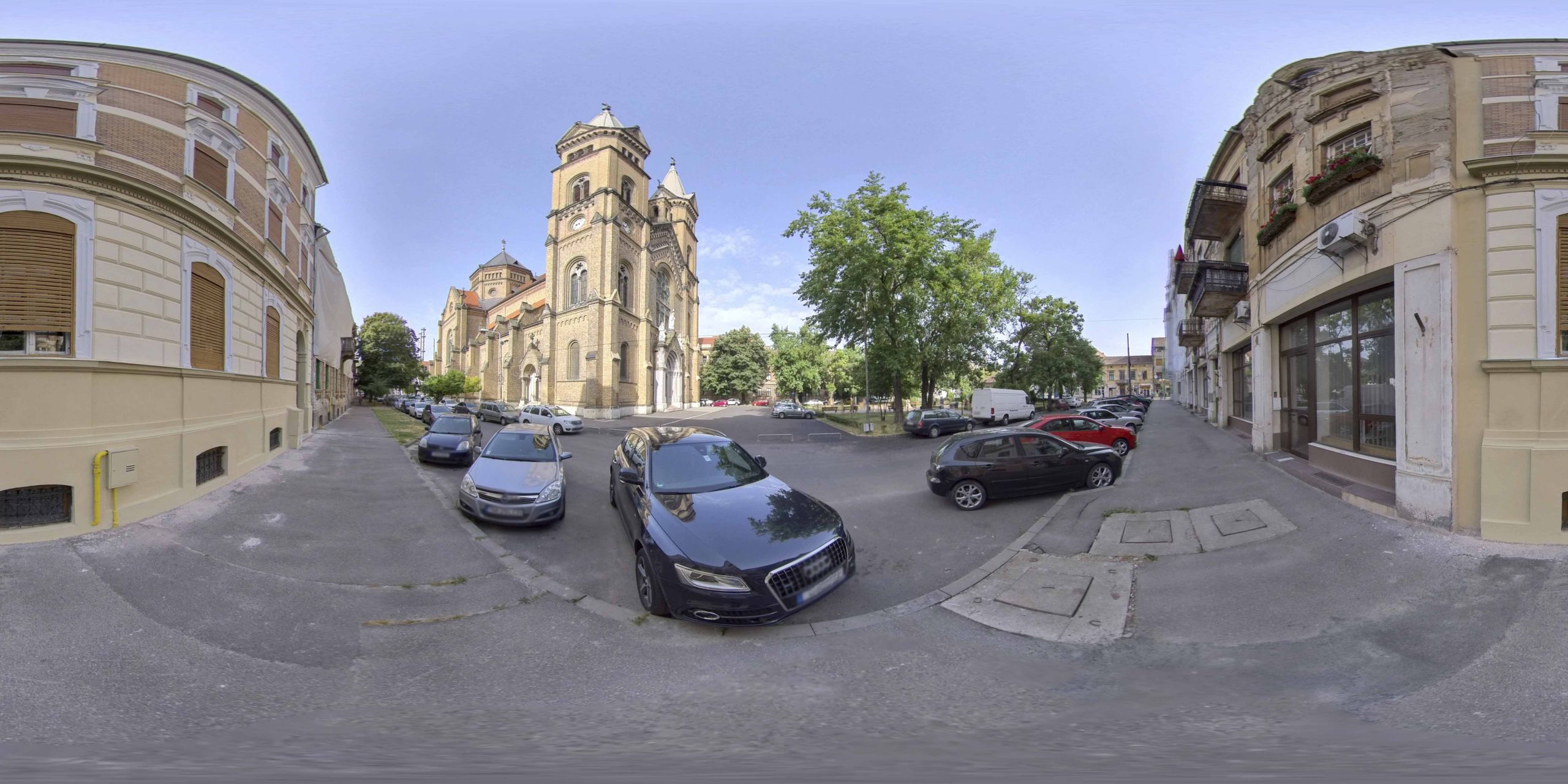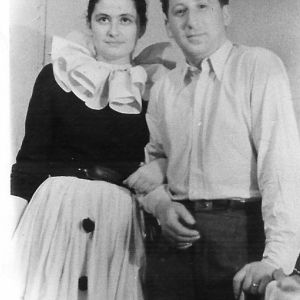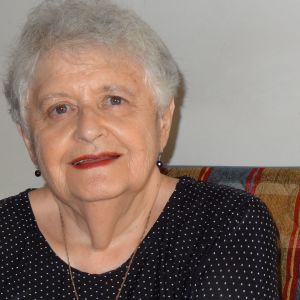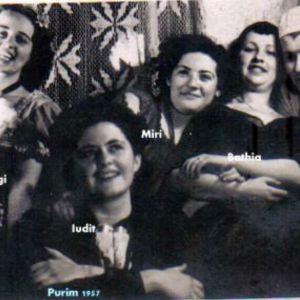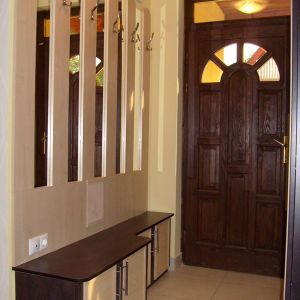Roman Catholic Church, Romanilor Square no. 2
The Roman Catholic Church, popularly known as the Millennium, was built in the Roman Square, with the facade facing 3 August 1919 Boulevard.
Listen to the audio version.
The first Roman Catholic church in the Fabric neighborhood was built in 1765 in Mitropolit Al. Suluțiu. Due to the fact that the church was too small, Abbot Vudy founded in 1886 an association for the construction of a new church. To this end, the local authorities contributed in 1890 with the amount of 84,000 crowns.
The foundation stone of the Millennium Church was laid on October 4, 1896, by Roman Catholic Bishop Dessewffy Sándor. It was meant to celebrate the 1,000th anniversary of the settlement of the Hungarians in the Pannonian Plain, being one of the various monuments built for this occasion.
The new church, popularly known as the Millennium, was built in Roman Square, with the facade facing the 3 August 1919 Boulevard. The church is built in an eclectic neo-romantic historian style, the architect is Lajos Ybl, the management of the yard belonged to Josef Kremmer senior, and the painting of the main altar and the two sides is the work of Gyorgy Vastagh. The building has an area of 1,700 m2.
The place of worship, designed for 3,000 people, benefited from the tones of an organ made by the famous Banat organ builder Leopold Wegenstein, and the 2,420-kilogram bell came from the Timișoara bell foundry Anton Novotny. The association set up to build the new church contributed 150,000 crowns. However, most of the total amount of 815,427 crowns came from the funds of the municipality of Timișoara.
The new place of worship was completed in 1901, being dedicated to the Virgin Mary.
Bibliography:
Josef Geml, The old Timișoara in the last half of the century 1870-1920, Cosmopolitan Art Publishing House, Timișoara, 2016.
Mihai Opriș, Mihai Botescu, Historic architecture in Timișoara, Tempus, 2014.
Around Christmas time, I remember that the boys would build a mobile Nativity Scene on Christmas Eve, with the Newborn, Baby Jesus, with St. Mary, with Joseph, with the animals, and they were candlelit and there was kind of a small cottage, with a manger. And they would come and sing here. They would go from door to door, knocking and asking “May we come in with Bethlehem?” And then the boys would sing carols and get some money or nuts and apples in return. Such was the tradition there.
Then, on January 6, the Romanians celebrate Boboteaza - the Epiphany, which we call Dreikönig - meaning the Three Kings from the East, who came to Bethlehem to look for the newborn, king of the Jews. It was a tradition on this holiday there, for the boys to dress like the Three Kings; one of the boys was black, you know. And they would come with a star, the star guiding them to Bethlehem, and sing a kind of star song. Again, they would knock from door to door, asking if the three kings could come in. And they would sing too.
I have almost forgotten… about St. Nicholas... another tradition: Nicholas and Knecht Rupprecht - would come by, but this was usually planned as everyone wanted St. Nicholas to come. My father or an uncle would often dress as St. Nicholas and bring presents to the children. And it was also carnival time, with costumes and masks, especially in the last three days before Lent.
And according to the customs that were still practiced there, it was the time of the carnival, when they disguised themselves, dressed in carnival costumes, especially in the last three days, before the beginning of Lent for Easter.
Else von Schuster, born Schmaus, in 1925, Anina, Caraş-Severin County – excerpt from an interview by Adrian Onica and Roxana Pătraşcu, in December 1999 and January 2000, in Timişoara, The oral history, and anthropology group archive, coordinated by Smaranda Vultur. Full interview in Germanii din Banat prin povestirile lor (Germans from Banat through their stories), coordinated by Smaranda Vultur, Ed. Polirom, Iaşi, 2018. Germans from Banat through their stories, coordinated by Smaranda Vultur, Ed. Polirom, Iași, 2018.
The History of Timișoara in a Hallway.
In 1939, we moved from Oravița to a splendid house in Timișoara. The house had 2 entrances: one in the stairwell, the other on a gangway. The elegant hallway wasn’t used as such for long. First, it was taken over by the Romanian army and some Romanian officers lived there for a few months. Then the Soviet officers, then the Russian ladies who would also cook there. After the liberation, we decided to host refugees from Bor there. They had been released from a labor camp, but Hungary was still occupied. Full board, of course. They left behind a few thank-you letters and bedbugs (under the rugs).
Some friends of my parents had been evicted by the Soviets (on Paris Street), they were simply thrown out in the street with furniture and all. My mother immediately suggested they stay with us. They came for three days and stayed fifteen years. They came with the maid and a hen, who lived with us.
The story doesn’t end here. My parents got the emigration permit, but because of the conflict with Egypt they could no longer leave the country; the newly painted house had already been given to others, so my parents were the last inhabitants of the hallway, for a few days.
The house where I grew up, Coronini Square 2 (then Roman Square, then Roosevelt Square), now I don’t know what it’s called. The house was owned by a German, but the 20 or so apartments were inhabited by Jews. Children then and still friends today, we spent most of the time in the yard shared with the Kincs house on Ștefan cel Mare 4 Street. Noisy hopscotch games, then the yard turned into kitchens, restaurants, pharmacies. Years later, here is where I received my first beaus, the first kisses. Because of the war, we often had to move to the common shelter in the basement. A family was deported to Transnistria. The doorman’s son served in the SS, he started shouting antisemitic slogans. The one who spoke out against him was Mr. Popa, who was a chorister at the Metropolitan Cathedral. Csuli, Zsuzsi, Dina, Judith, Ricsy, Eva, Vera, Peter, Gyuri, and others have scattered around the world, but we have stayed friends for over 75 years.
We had moved to Timișoara (from Oraviţa) in ʼ39, when I was three years old. I lived in a house with Annie (Hammer) on Stephen the Great in Fabric, a Durchgang house, Durchgang, meaning a transition one. So we stayed in Coronini Square, Roosevelt, Romanilor, because it kept changing its name, and she lived on the opposite. How many apartments were there? Two floors of 4 apartments make 16, the house had two parts, so about 30. In these 30 there were two Romanian families. The rest, Jews. The doorman was a Nazi, but as a child, you know what it's like. As in Kertész's books, we, the children, went to see him, because he was an officer. From the Gestapo! We looked at him in admiration, wearing a splendid black uniform. Towards the end of the war, he angrily smashed the cellar furniture! We took it there, because when the alarm went off, the whole gang was on the couches in the cellar and we kept talking. Maybe he was looking for money or I don’t know why he shattered all the furniture! After the war, he disappeared. Below us lived a couple, the lady was Jewish and there was the Hungarian Mr. Dezső. When the doorman swore and said anti-Semitic things, Dezső came out and said, “What, my wife stinks ?! Aren't you ashamed to say such a thing ?! ”. He set him straight.
Judith Cohn, born in 1936 in Oravița - excerpt from Jewish Destinies in Timișoaraby Getta Neumann, Hasefer Publishing House, Bucharest, 2014.
The family of organ builders Josephi came to Banat in the early 19th century. Three members of it are recorded: Johann (18th century, Bohemia, 19th century, Timișoara), Leopold (1809, Bohemia - 1834, Timișoara) and Georg (1809, Bohemia - 1850, Timișoara), "skilled and experienced craftsmen" , as expressed by Joseph Kratochwill, Kapellmeister of the Timișoara Dome, in a letter from 1834, addressed to the Cenad Dome, in which he recommends Johann and Georg, as repairmen for the maintenance of the Timișoara Dome organ, and builders of several very good tools in the country. The workshop of the three brothers was located in the Fabric neighborhood, near the Yellow Eagle Inn,at number 27 in Herrengasse, the current Busteni street. Next to them, at number 25, the Wegenstein family must have lived, according to an elderly person.
Franz Metz, excerpt published in: Smaranda Vultur, Vlad Colar, Thomas Remus Mochnacs, Gabriela Panu, Memory and cultural diversity in Timișoara: trades and craftsmen, Brumar Publishing House, Timișoara, 2013 Memory and cultural diversity in Timișoara: crafts and craftsmen, Brumar Publishing House, Timisoara, 2013
The "Dacia" cafe was in Fabric, where cards were played. In Trajan's Square there was a restaurant and a brewery on the corner of Coronini Square, where the millennial Catholic church is. There's a store there now. That huge house, the Totis house, is being repaired now. Totis was the director of the Wool Factory, he was very rich, he was a Jew.
Oscar Schwartz, born in 1910, Vienna - excerpt from the interview conducted by Adrian Onică in Timişoara in 1999, The oral history and anthropology group archive, coordinated by Smaranda Vultur.
Stories about Timișoara in the past with Francisc Valkay
